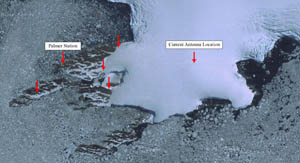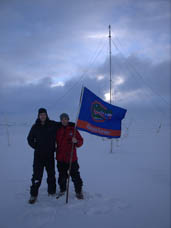Palmer Field Report 2013
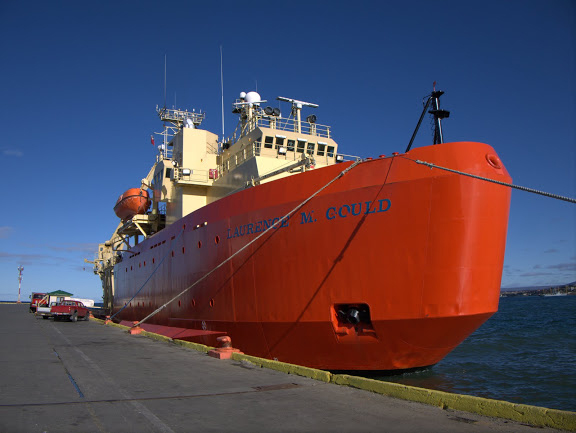






Palmer Station: April 2013
The first of yearly maintenance visits to the VLF site at Palmer Station on Anvers Island, Antarctica. The journey entails a flight down to the port town Punta Arenas, Chile, followed by days of seafaring aboard the Laurence M. Gould, an NSF science vessel. Past the rough seas, beautiful scenery, and possible fishing extravaganzas, lies the U.S. Base “Palmer Station.” During this time, the VLF receiver lay atop a slowly crumbling glacier past the backyard of the site. This trip required more than the usual amount of field maintenance work, as this antenna was inherited in poor condition.
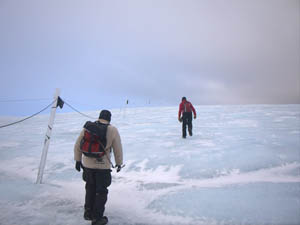
Though in Antarctica, the coastal Anvers Island has a relatively mild climate, with temperatures never straying far from freezing. Unfortunately, this means that the glacial surface melts and refreezes multiple times per year. In addition to the high winds, often exceeding 30 knots, the posts that serve to keep the instrumentation cable off the ice, and to hold down antenna guy wires loosen, and may often fall. Without special care and attention, many problems arise – such as a lack of strain relief, broken instrumentation cable connectors, and a tilted/loose antenna mast.
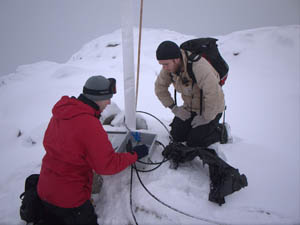
Being a unique continent with unique problems, Palmer Station offers interesting opportunities. Without a thick, soil based ground beneath the station, the VLF system must be grounded via a large copper tube resting in the waters of nearby Hero Inlet. Unfortunately, the salt water easily corrodes the grounding tube and wire, requiring the researchers take a ride in a Zodiac, a military-grade, inflatable boat.
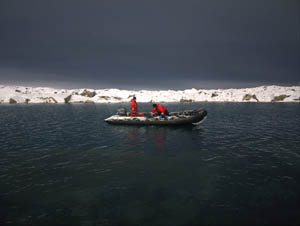
Throughout the trip, ELF/VLF noise survey (found here) were conducted to find ideal locations for future ELF/VLF antenna locations. Additionally, the receiver electronics were consolidated and re-organized. Overall, the fixing of the instrumentation cable, replacement of the sea-ground, and readjusting of the system anti-aliasing “Trabucco box” greatly improved signal quality. Calibrations were performed before and after the system improvements. All goals of this trip were accomplished, finishing another Antarctic journey on a good note.
